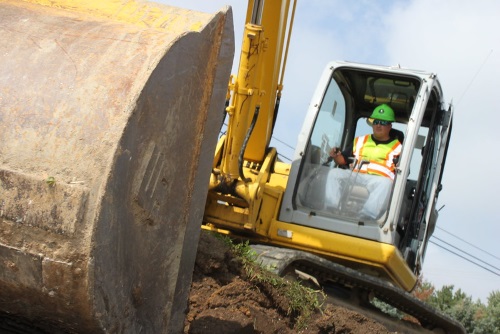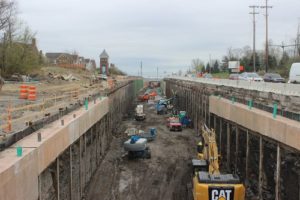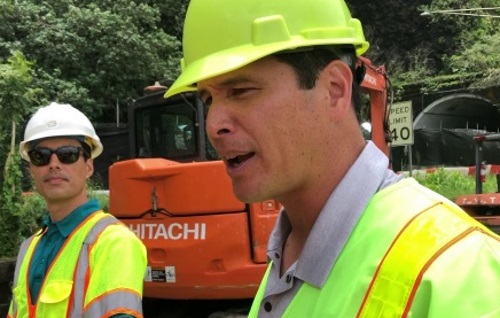A roundup of headlines curated for state transportation environmental professionals
FEDERAL ACTION
Court for second time strikes down Trump admin rollback of automaker penalties – The Hill
Climate Change Debate Adds to Busy Fall Congressional Agenda – Transport Topics
Green groups fight EPA rollback limiting states from blocking projects – The Hill
American Highway Users Alliance encourages FAST Act extension – Transportation Today
COVID-19
Avoiding Gridlock: Strategies to Keep Cities Moving in a Pandemic & Beyond – September 3 – NACTO (Webinar announcement)
IBTTA releases five-month update to State of US Transportation during COVID-19 – Transportation Today
Safety, Data, and Green: Transport Sector’s Sustainable Recovery from COVID-19 – Modern Diplomacy
NEPA
NEPA Rules Rewrite: Public Involvement Process – JD Supra
U.S. Chamber coalition to defend NEPA in court – Transportation Today
Trump Touts Infrastructure Permitting Reforms – Transport Topics
INFRASTRUCTURE RESILIENCE AND SUSTAINABILITY
Dairy Farmers Of America Sets Sustainability Goal To Reduce Greenhouse Gas Emissions By 30% For The Decade – Dairy Farmers of America (Press Release)
AIR QUALITY
Coalition Releases New Sustainable Aviation Fuel Guide – Renewable Energy
A Look at Title V Permits for MSW Landfills Under the Clean Air Act. – EHS Daily Advisor
ENVIRONMENTAL JUSTICE
Marsha Jackson Is Trying to Move Shingle Mountain – Texas Observer
NATURAL RESOURCES
Are abandoned mines affecting our drinking water or could they soon? – Deseret News
‘I’m not the bad guy here’: Eastern Oklahoma mine operator stands firm against Clean Water Act legal challenges – KMIZ-TV
CULTURAL RESOURCES
Virginia Coastal Policy Center announces partnership with tribes, N.C. institutions – William and Mary
Historic Landmark Commission vetoes skyscraper design for historic building – Austin Monitor
Trump Administration Invests $4.8 Million in Grants to Support Historic Preservation in Rural Communities – National Park Service (Press release)
HEALTH AND HUMAN ENVIRONMENT/ACTIVE TRANSPORTATION
Bicycles: A Refuge for Transit Commuters? – New Geography
Ann Arbor’s 4M campus to mix health living, working and mobility practices – ClickOnDetroit
How accessible is active travel infrastructure? – BikeBiz
Calif. Shared Mobility Bill Amended to Remove Liability Waiver Ban – Law Street
TRB RESOURCES/ANNOUNCEMENTS
TRB Webinar: Stay Current on Research in Progress – TRB
Proposed AASHTO Guidelines for Performance-Based Seismic Bridge Design – TRB
TCRP 2019 Annual Report of Progress – TRB/TCRP
Shared Mobility and the Transformation of Public Transit – TRB/TCRP
New Review Finds NYC Watershed Protection Program Successful in Maintaining and Enhancing Water Quality – National Academies of Sciences, Engineering, and Medicine (News Release)
Providing opportunities to learn about transportation-related careers – Mineta Transportation Institute
The Future of Transportation – San Francisco Bay Area Planning and Urban Research Association
FEDERAL REGISTER NOTICES
Revised Notice of Intent To Prepare an Environmental Impact Statement for the California High-Speed Rail System, Los Angeles to Anaheim Project Section, CA – FRA (Notice)
Notice of Final Agency Actions on Proposed Railroad Project in California, on Behalf of the California High-Speed Rail Authority – FRA (Notice)
Public Hearing for Control of Air Pollution From Airplanes and Airplane Engines: GHG Emission Standards and Test Procedures – EPA (Notice of public hearing)
Information Collection Request Submitted to OMB for Review and Approval; Comment Request; The National Oil and Hazardous Substances Pollution Contingency Plan Regulation, Subpart J (Renewal) – EPA (Notice)
Administration of Cross-State Air Pollution Rule Trading Program Assurance Provisions for 2019 Control Periods – EPA (Notice of date availability)
Hazardous and Solid Waste Management System: Disposal of Coal Combustion Residuals from Electric Utilities; A Holistic Approach to Closure Part A: Deadline to Initiate Closure – EPA (Final rule)
Draft National Spatial Data Infrastructure Strategic Plan; Comment Request – Geological Survey (Request for public comment)
FEMA’s Hazard Mitigation Assistance and Planning Regulations – FEMA (Notice of proposed rulemaking)



